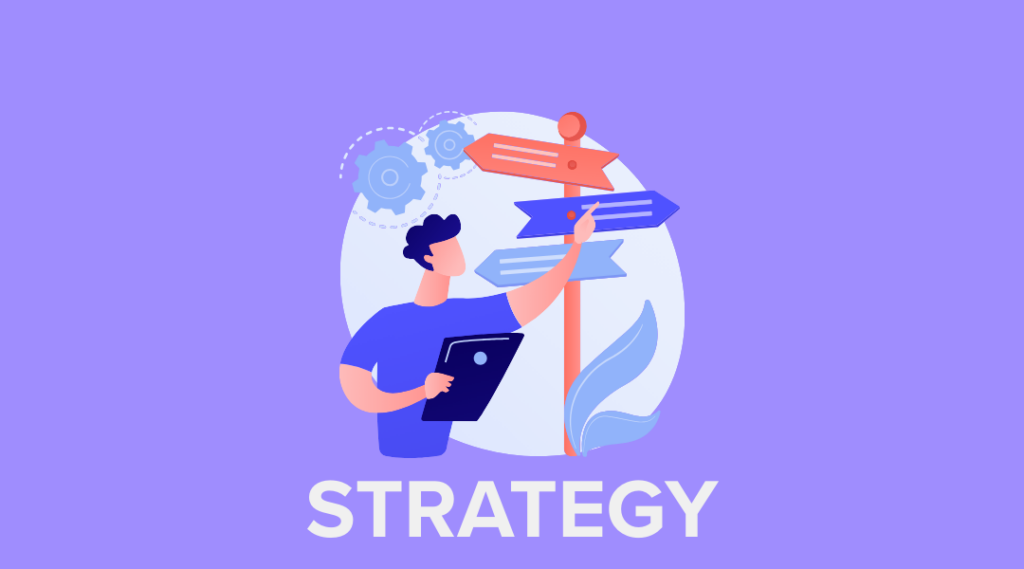Summary:
A successful CMS migration isn’t just about launching a better-looking site—it’s about protecting the traffic, rankings, and revenue you’ve already earned. When planned strategically, a platform switch can unlock faster growth, cleaner UX, and stronger SEO performance without sacrificing momentum.
Sometimes, SEO works too well. Traffic scales. Conversions climb. And suddenly, you’re outgrowing the platform that got you here. We’ve seen this across a range of CMS setups—WordPress with WooCommerce, BigCommerce, and even custom solutions. For many ecommerce brands, Shopify Plus becomes the natural next step. On the B2B side, we’ve helped companies move from WordPress to HubSpot to better align with their CRM and ABM goals.
The common thread? Growth exposes the cracks. Pages load slower. Tech debt piles up. The site becomes hard to manage, and now, marketing is outpacing your infrastructure. That’s when conversations shift to migration.
Handled well, a CMS or platform migration can be the best thing for your brand’s visibility and revenue. Done poorly, it can unravel years of SEO gains. This guide walks through the SEO best practices that help you navigate migrations the right way—without losing your momentum.
Why the right CMS matters
Your content management system (CMS) is more than a backend—it’s the infrastructure your entire marketing and sales engine runs on. The platform you choose directly impacts growth, whether that’s how your site is crawled, how fast it loads, how easy it is to update content, or how well it integrates with the rest of your tech stack.
What works for a scrappy startup or niche brand might not scale with a growing team, larger catalog, or more complex buyer journey. The platform that carried you through $500K in revenue might buckle at $5M.
Here’s where platform-CMS fit tends to matter most:
- For eCommerce brands: You need a platform that supports performance and flexibility—fast page speed, smooth checkout, and stable uptime during peak traffic. Platforms like WooCommerce might work early on but often require more duct tape and plugins to scale, while platforms like Shopify offer stability, ease of management, and scalability out of the box.
- For B2B businesses: WordPress can work well, but as marketing gets more personalized, integrations with tools like HubSpot (or moving to HubSpot CMS entirely) can create smoother account-based marketing (ABM) workflows, sales enablement, and lead tracking.
- For content-heavy brands: CMSs with strong support for structured content, flexible layouts, and dynamic routing can make a big difference in how efficiently you scale content without breaking site structure or SEO.
Your CMS should be chosen not just for where you are, but for who you’re becoming. Smart platform decisions aren’t about bells and whistles—they’re about building toward a future where your website drives growth, not friction.
Knowing when it’s time to migrate
Not every platform change starts with a crash. Some migrations are reactive—others are proactive. Here are common signs that your CMS is holding you back:
Signs you’ve outgrown your platform
- Site instability under traffic surges: If your site slows down or crashes during peak seasons, that’s a major red flag.
- Checkout or conversion issues: For ecommerce, recurring cart errors or broken flows can directly impact revenue.
- CMS limitations: Hitting a wall when trying to create landing pages, run A/B tests, or scaling content usually points to platform limitations.
- Developer bottlenecks: If every content update or landing page requires dev time, your platform may no longer suit a fast-moving marketing team.
- Poor integration with your tech stack: For B2B brands, lack of native CRM integration (e.g., HubSpot) or marketing automation friction can block ABM and lead-gen workflows.
Benefits of migrating to a better-fit CMS
- Improved site performance: Faster load times and better uptime improve SEO and UX.
- Greater marketing flexibility: Modern platforms allow marketers to publish content and build pages without dev reliance.
- Stronger tech integrations: Better CRM, analytics, and personalization integrations align your site with how you operate.
- Scalability: The right CMS supports traffic growth, content expansion, and internationalization without duct tape fixes.
Being proactive saves more than rankings—it saves time, money, and your team’s sanity. When you’re not rushing to fix a broken site or scrambling after a crash, you give yourself the space to make smarter decisions. That space lets you plan for where your business is going, not just where it is today—choosing a platform that scales with you for the next five years, not just the next five months.
Common SEO pitfalls in platform migrations
Migrations are notorious for breaking things—especially SEO. Done wrong, they can become a silent killer, costing a business hundreds of thousands—or even millions—in lost traffic and revenue. Here’s where it usually goes wrong:
Broken or incomplete redirects
Pages get moved, URLs change, and without a meticulous redirect strategy, users (and search engines) hit 404s. Redirect chains, loops, or mismatched destination pages can further erode SEO gains.
Keyword and intent mismatch
We’ve seen new site designs launch with beautiful templates that no longer align with the original keyword targets. Copy gets removed, headers change, or the new page doesn’t serve the same user intent. Rankings drop fast when intent and optimization don’t match that of the replaced page.
Design-first decisions that hurt SEO
Don’t get this wrong. Good design is non-negotiable in modern sites. However, if SEO isn’t involved in the design phase, things often get missed—like leaving room for copy, heading structure, or internal linking. It’s hard to reverse SEO into a bad template later.
Dropped schema, meta tags, or internal links
It’s such a simple concept, yet during a rebuild, even the SEO basics can vanish. Schema markup, canonical tags, alt text, titles, and meta descriptions often don’t make the jump. Internal links—one of the most overlooked but critical pieces—get dropped. These are the invisible layers designers and developers may not consider, but they’re foundational to how your site is crawled, indexed, and ranked.
Analytics and Tracking Gaps
New site, new structure—but the same old tracking setup. Analytics often break or misfire post-launch due to misconfigured tools. Even worse? We've seen GA4 or GTM tags scrapped entirely, replaced with new ones—wiping out historical data and killing your ability to compare performance month-over-month or year-over-year. That kind of data loss makes it nearly impossible to benchmark growth or prove success.
Pre-migration SEO planning
A good migration can’t be pulled off in a week. The bigger the site, the more complex the content and user flows, the more time and planning you’ll need to do it right. Rushing invites mistakes that are hard to unwind. The more you invest upfront, the smoother the migration will go, and the better the results will be on the other side. Start here:
1. Conduct a full SEO audit
- Inventory your current rankings, traffic-driving pages, backlinks, and top-performing content.
- Use tools like SEMrush, Screaming Frog, and Google Search Console to collect a baseline of performance.
2. Map keywords to existing URLs
- Identify your highest-value pages and the terms they rank for.
- Create a keyword-to-URL map to ensure future versions of the site maintain keyword relevance and match search intent.
3. Define technical requirements
- Work with dev and design to ensure things like crawlability, schema support, faceted navigation, and load speed are considered before a single wireframe is built.
- Push for SEO to be included in wireframe and template discussions—before design is finalized.
4. Prioritize high-impact pages
- Not all pages are equal. Flag the pages that drive the most traffic, conversions, or links and make sure they’re protected.
5. Prepare redirect maps in advance
- Match old URLs to their new counterparts, ensuring 1:1 relevance wherever possible.
- Avoid blanket redirects or sending all URLs to the homepage.
During development: executing the SEO plan
This is where everything comes together—or falls apart.
1. Test everything in a staging environment
- Crawl the staging site to find issues before launch.
- Test redirects, schema, metadata, and internal links.
2. Retain critical on-page elements
- Make sure titles, H1s, body copy, and structured data all transfer correctly.
- Keep or improve internal linking between related pages.
3. Push with redirects fully mapped
- Implement 301 redirects from old URLs to new.
- Use a tool like Screaming Frog to test and validate every redirect.
4. Monitor the launch in real time
- Set up alerts in Google Search Console.
- Track crawl errors, traffic drops, and performance shifts during the first 72 hours.
Migration day & post-launch: monitor, fix, and grow
The moment your new site goes live is just the beginning. A smooth launch depends on proactive monitoring and fast follow-up. Here’s how to protect your SEO gains and build on your momentum:
Audit for staging oversights
- Before anything else, double-check for leftover noindex tags or disallow directives from staging.
- If these are still active post-launch, search engines won’t crawl or index your new site—effectively erasing your visibility overnight.
Monitor the launch in real time
- Set up alerts in Google Search Console and watch performance metrics closely during the first 72 hours.
- Track crawl errors, traffic patterns, and indexing behavior. Catching problems early can mean the difference between a hiccup and a full-blown crisis.
TIP: Do not push a new site live Friday at 5pm. You want the full team present and available for the first 48-72hrs to catch urgent issues.
Compare pre/post performance
- Benchmark key pages before and after launch.
- Expect minor volatility, but watch for steep drops in rankings or traffic—especially on your high-converting pages.
Submit updated sitemaps
- Push your new XML sitemap to Google Search Console as soon as the new site is live.
- Make sure your priority URLs are being crawled, indexed, and displayed properly in search results.
Rebuild Broken Backlinks (If Needed)
- Use a backlink tool to find any valuable inbound links pointing to old URLs that are now 404.
- Either 301 these pages or reach out and request updates where possible—especially for links from high-authority sites.
Refresh and Expand Content
- Post-migration is a great time to evaluate your content.
- Reinforce thin pages, tighten keyword alignment, and expand topic clusters to strengthen rankings and conversions long-term.
How a CMS migration helped fuel 100%+ revenue growth
R.J. Classics came to us with strong products and a legacy in the equestrian space—but a fragile ecommerce foundation. As SEO began to take off, their WordPress site with WooCommerce couldn’t keep up. During their peak season, the site crashed.
We helped them assess CMS options and ultimately migrate to Shopify with a trusted development partner. SEO influenced everything from site architecture and landing page structure to redirect mapping and launch QA.
The results?
- Market visibility grew from 11% to over 50%
- Organic traffic increased 114% YoY
- Ecommerce revenue more than doubled
This wasn’t just a successful migration. It was a strategic pivot that allowed them to scale faster, rank higher, and drive significantly more D2C growth.
The worst time to plan a migration? When everything’s breaking
The best time to plan a platform migration is before your site breaks. We’ve seen brands duct-tape their way through growth until everything collapses—and then rush the rebuild under pressure. That’s when mistakes happen.
Instead, view migration as a proactive move. One that protects your SEO investment, supports your marketing efforts, and future-proofs your growth.
If you're seeing the signs that your CMS can’t keep up, start the conversation early. Your SEO team should be in the room from wireframes to launch.
Ready to migrate without the mayhem? Let’s talk.
We’re willing to lose sleep (so our clients don’t) navigating platform migrations without losing rankings, traffic, or momentum. Whether you’re planning ahead or already seeing signs it’s time to move, we’ll help you build a strategy that protects SEO and accelerates growth.
Let’s make your next CMS move the right one. Let's talk →
You might also like:






